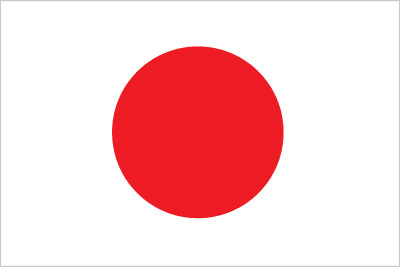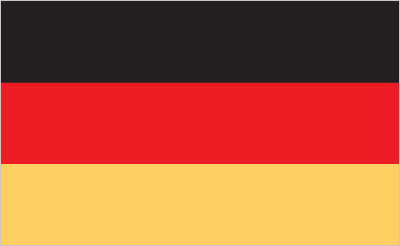
Types, brands and manufacturers of soy sauce available in Germany
Basically, Japanese ingredients and seasonings are more expensive to buy in Germany than in Japan.
This is because the production cost itself is inevitably high due to transportation costs and the time and effort involved in the manufacturing process even if it is made in the EU.
So when you move from Japan to Germany, do you know what ingredients you should bring from Japan, and what seasonings and ingredients you can buy locally?
As you can imagine, soy sauce is one of the most common Japanese foods you can buy in Germany.
Introducing the Types of Soy Sauce You Can Buy in Germany
Well, even if you say soy sauce, there are actually many types, and when you go to buy soy sauce for the first time, you will be confused by brands you have never seen or heard of, so it is not easy.
In addition, soy sauce is also used in China and South Korea, and you can actually see soy sauce from other countries in Germany.
This time, we will explain the types and brands of soy sauce that you can find in Germany.
Most common Japanese soy sauce: Kikkoman

Several Japanese soy sauce and food manufacturers have expanded into Europe, and in fact Germany has access to a wide range of Japanese foods, seasonings and ingredients, not just soy sauce.
In terms of accessibility, it is probably in a position to compete with the United Kingdom for first and second place in Europe.
Going into the main topic, Kikkoman is the most popular Japanese soy sauce that you can find in Germany.
If your local supermarket has an Asian section, you may find small bottle-sized products for tabletop use.
Kikkoman is also known in Europe as Kikkoman, with 1 liter sizes available in large supermarkets, and it can be said that it is the most familiar brand of Japanese soy sauce that you can find in Germany.

By the way, Kikkoman's soy sauce is also made overseas, and Kikkoman's soy sauce available in Germany is made in the Netherlands.
Originally, soy sauce produced in Singapore was transported to Europe for sale, but in the 1990s, Kikkoman established a production base in the Netherlands, establishing a local production and sales system in Europe.
Regarding the difference in taste between Japanese soy sauce and Kikkoman soy sauce from the Netherlands, I felt that the taste was slightly different.
I didn't notice the difference until I tasted it, and I couldn't feel the difference unless I tasted it.
The most common soy sauce in supermarkets: Blue Dragon

Quote: tacinte: https://world.openfoodfacts.org/cgi/product_image.pl?code=2020538220235&id=2
Isn't the soy sauce most commonly seen in supermarkets made by this manufacturer?
Blue Dragon is a British brand that has been around since the 1970s.
This Blue Dragon is owned by a company called Associated British Foods plc (commonly known as AB Foods).
AB Foods may not sound like much, but it's actually a huge multinational company that owns not only food, but Primark, one of Europe's cheapest clothing brands.
Blue Dragon's soy sauce is cheaper than Kikkoman's soy sauce, so it may be attractive to people who want to keep food costs down.
Then, if it is the same as Japanese soy sauce, this soy sauce is a so-called Chinese type soy sauce.
The difference between Japanese and Chinese soy sauce will be explained later, but the difference here is obvious if you look at the ingredients.
Looking at Kikkoman's soy sauce, according to the website, the ingredients are only water, soybeans, wheat, and salt. (European Kikkoman also uses the same raw materials.)
On the other hand, if you look at the ingredients of Blue Dragon's dark soy sauce from the website , it will be as follows.
"Water, Sugar, Salt, Soy Sauce Extract (9%) [Water, Defatted Soya Bean Flakes, Wheat , Salt], Color (Ammonia Caramel), Acidity Regulator (Lactic Acid), Preservative (Potassium Sorbate)"
If you translate this into Japanese, it will be as follows.
"Water, sugar, salt, soy sauce extract (9%) [water, defatted soybean flakes, wheat, salt], coloring (ammonia caramel), pH adjuster (lactic acid), preservative (potassium sorbate)"
As you can see, Kikkoman's soy sauce uses very simple ingredients, while Blue Dragon's soy sauce uses food additives such as pH adjusters and preservatives.
Chinese soy sauce often found in Asian shops: Pearl River Bridge

Citation: Luidaguhee, CC BY-SA 3.0 <https://creativecommons.org/licenses/by-sa/3.0>, via Wikimedia Commons
This is a soy sauce from a Chinese food manufacturer, and I think you will often see this soy sauce when you go to an Asian shop.
Chinese soy sauce and Japanese soy sauce are used for different purposes and have different tastes.
There are two types of Chinese soy sauce, San Chau and Lo Chau.
Namabetsu has a strong salty taste similar to light soy sauce, and is used to season dishes.
On the other hand, old extraction has a tamari soy sauce flavor and is used for coloring rather than seasoning.
Basically, Chinese soy sauce contains less wheat than Japanese soy sauce, and the direction of taste is different from Japanese soy sauce, such as adding sugar.
Also, it is said that Japanese soy sauce takes several months to produce, but Chinese soy sauce has a shorter manufacturing process than Japan.
This brand sells many types of soy sauce, but as an example, if you check the ingredients of Superior Dark Soy Sauce on the website , it says "water, soybeans, sugar, salt, flour" and sugar is added. I understand.
Perhaps because of the difference in the manufacturing process, this brand's soy sauce is also cheaper than Kikkoman's soy sauce.
As you can see, even though the names of soy sauce in Japan and China are the same, there are big differences.
summary
What kind of soy sauce can you buy in Germany?
You can buy a variety of soy sauces in Germany as well, and when you compare prices, Japanese soy sauce may seem expensive, but Kikkoman's soy sauce takes more time and effort than European brand soy sauces or Chinese soy sauces. , you can see the reason why. As you can see from the above, we recommend Kikkoman, a Japanese food and seasoning, and Japanese brand soy sauce for cooking Japanese food.



